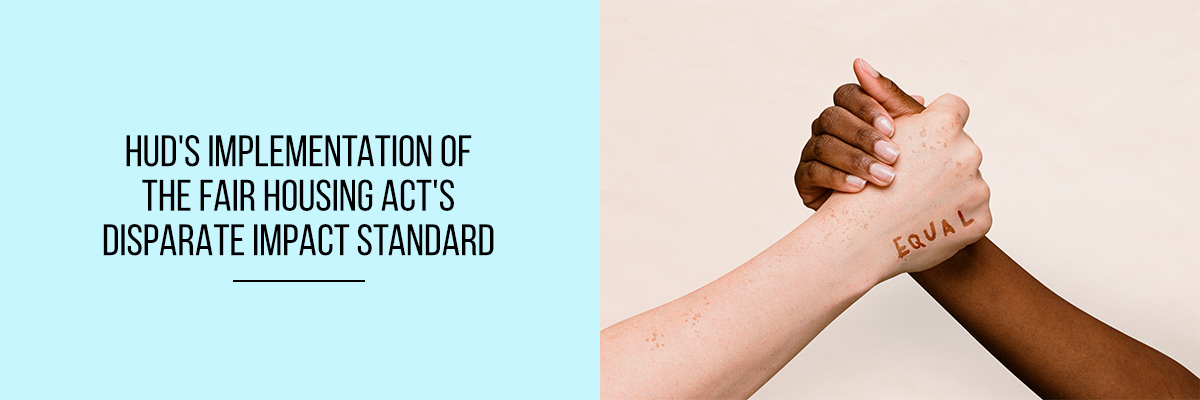The Fair Housing Act prohibits discrimination in the sale, rental, and financing of housing regardless of race, color, religion, sex, national origin, familial status (including children under the age of 18 living with parents, pregnant women, and people securing custody of children under the age of 18), disability, and, in some jurisdictions, sexual orientation. The Act also prohibits housing discrimination against families with children under the age of 18. The Fair Housing Act has been amended to address these issues.



HUD has long interpreted the Fair Housing Act to create liability for practices that have an unjustified discriminatory effect. And, for years, HUD has used its authority under the Fair Housing Act and its implementing regulations to bring disparate impact liability claims from local governments, housing providers, and others.
Fair Housing Act’s Disparate Impact Standard
HUD’s interpretation of the Fair Housing Act has changed over the years, and for the most part, HUD has agreed with the Equal Employment Opportunity Commission (EEOC) that the disparate impact standard applied to housing practices created by an agency is the same as the disparate impact standard applied to employment practices, with the result that HUD is now obligated to address the effects of its regulations on the residential mobility of minorities.
The Fair Housing Act requires public housing agencies (PHAs) to provide their residents “with the opportunity to choose the housing that best meets their needs.” The disparate impact standard, or “disparate treatment” standard, is part of that requirement. It prohibits PHAs from engaging in housing-based discrimination that has an unjustified discriminatory effect—that is, that has an effect that is not intended to advance any legitimate interest but instead creates an unjustified disparity in the opportunity to enjoy the benefits of housing.
The disparate impact standard of the fair housing laws creates a duty for a housing provider to remedy a housing practice that has a discriminatory effect, even if it is not motivated by discriminatory intent. The disparate impact standard is most commonly applied in cases where housing providers provide different levels of service to individuals with disabilities and individuals without disabilities, or where housing providers engage in different levels of enforcement (e.g., issuance of different housing quality standards, such as an occupancy limit for a particular apartment).
When the concept of disparate impact first began to gain traction in the early 1990s, it was viewed as a way to make housing more equitable. Essentially, disparate impact required the government to prove that the practice in question had a discriminatory effect rather than merely proving that it was motivated by discriminatory intent.
Final Words
HUD’s interpretation of disparate impact is an attempt to ensure that the Fair Housing Act can continue to fulfill its promise of ending discrimination in housing. Imposing liability based on discriminatory effect will allow the Department to address racial segregation and disparate housing needs, which have persisted for decades.
Attend the Compliance Prime webinar to learn more about Fair Housing Act’s Disparate Impact Standard.


